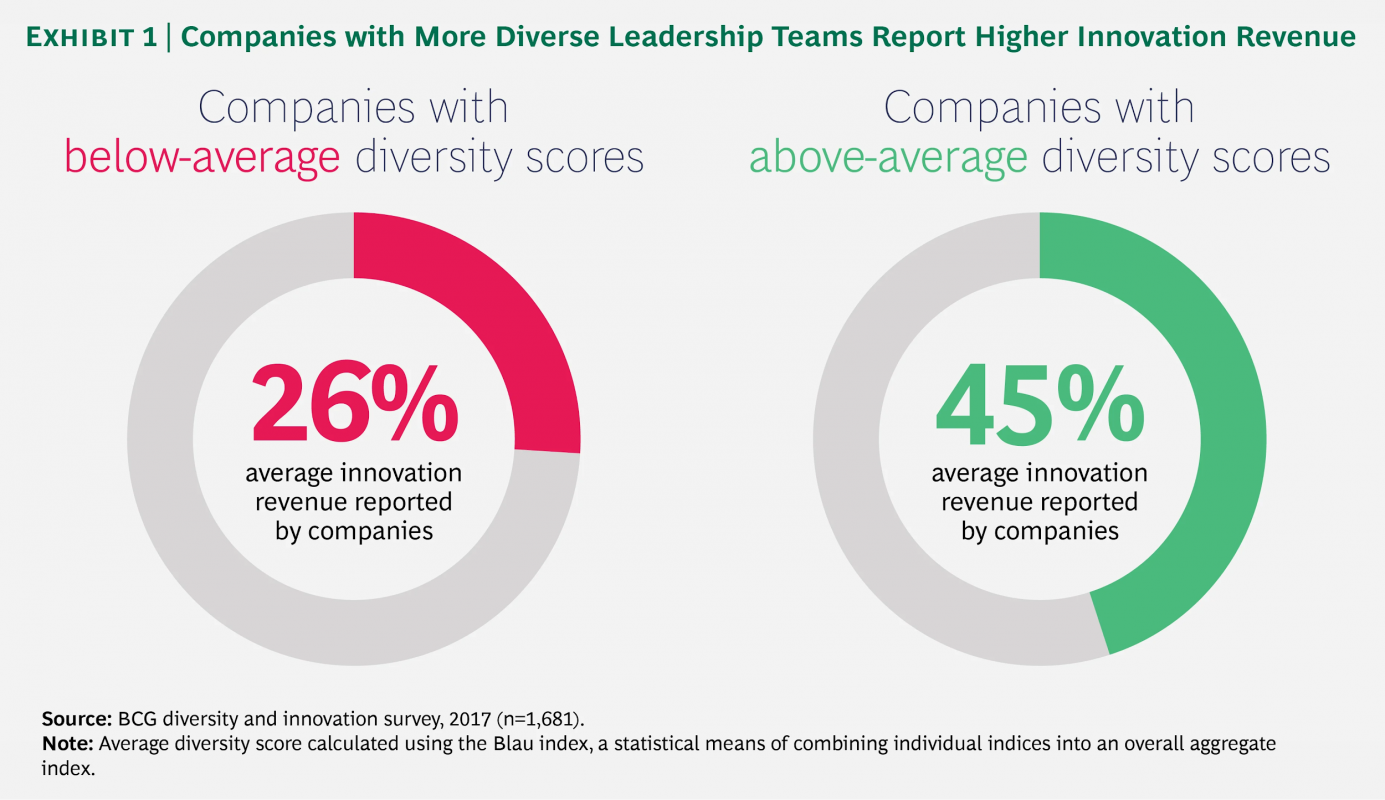18 Aug

Diversity is not only a buzzword. Rather, it is an essential component of a healthy and productive workplace. That’s why it is important to know ways to improve inclusion in the workplace and enhance diversity.
The majority (78%) of companies prioritize diversity in recruiting to improve culture whereas 62% do so to ameliorate financial performance according to a Linkedin report.
To build diversity within a business, recruiting and hiring diverse talent is an insufficient scalable solution. Managers must also focus on inclusion to retain talent.
Whether representing diversity in race, gender identity, ability, sexual orientation, cognitive, socioeconomic or any other personal identifier, employees merit proactive inclusion efforts.
Time, money, and talent are lost when managers do not recognize and address the unique needs of individual employees to be successful in the workplace.
Companies with increased diversity improve their bottom lines, averaging 19% higher revenue.

Source: bcg.com
Companies actualize the benefits of a diverse workforce by pairing hiring initiatives with proactive inclusion efforts that sustain employees with diverse backgrounds.
To create a more inclusive workplace, companies can take the following three steps:
- Communicate goals and measure progress
- Listen to employees
- Recognize differences
For a company to innovate, they must sustain diverse employees. Inclusion initiatives help employees feel valued and respected, encouraging their lasting presence in the organization to support a business’ bottom line.
Table of Contents
Communicate Inclusivity Goals To Raise Awareness
Managers should communicate inclusivity goals to encourage cultural change in the office. To create an inclusive workplace, managers must engage employees in initiates.
The first step towards change is awareness. A full audit of people-centric processes from recruiting to retention in conjunction with engagement surveys provides a holistic measure of an organization’s culture. With this data and expert guidance, managers can devise a plan with measurable goals to address discrepancies in engagement.
An effective plan to improve inclusion involves employees. Managers and employees alike must understand how behaviours influenced by unconscious bias impacts office culture.
Basic identifiers such as names impact people’s decisions. MIT and University of Chicago researchers found that resumes with “White” sounding names receive 50% more callbacks for interviews than those attributed with “African American” sounding names.
Recruiters did not intentionally discriminate against candidates with “Black” names. Rather, those studied exhibited an unconscious bias against applicants perceived to be African American.
Eliminating unconscious bias requires consistent effort. Beginning to eliminate these harmful concepts requires education. Managers should educate employees about the impact of social stereotypes and which behaviours reinforce biases.
Concern for diversity or unconscious bias training can cause participants to become defensive. Explaining unconscious bias as a result of cultural structures rather than a character flaw helps to mitigate defensiveness.
Unconscious bias training empowers employees with the knowledge necessary to analyze and question their actions, encouraging employees to reduce bias. After attending an unconscious bias training, 96% of participants exit planning to engage bias-reducing behaviours.
Managers must engage employees to change workplace structures that inhibit inclusion.
Create Spaces For Employees to Share Feedback
Employees should not have to wait to feel included or feel uncomfortable about asking to have their needs met. Surveys and focus groups gather data concerning the state of inclusion and engagement in the workplace.
With the data, managers can learn what they do not know and ask questions to help develop specific solutions.
Employee resource groups offer a safe space for employees of similarly diverse backgrounds to communicate with one another. Generally, employee resource groups are sponsored by individual executives, meaning the onus is on managers to create this opportunity. These groups also provide managers with insight into the challenges employees face and potential solutions.
Managers can also create a direct channel of communication by establishing inclusion in the workplace. By selecting employees dedicated to inclusion for membership, managers support its continued advocacy at top levels of the organization.
The goal of an inclusion council should be to set goals for hiring, maintaining, and advancing diverse members of the workforce. A council can meet to assess employee feedback, address challenges, and communicate their efforts to organizational executives.
To diversify membership as much as possible, the criteria for membership should extend beyond a demonstrated commitment to inclusion. Ideally, members should represent different personal identities, business functions, and geographic locations.
Employee resource groups and inclusion councils should work in tandem to optimize inclusion in the workplace strategy.
Managers can support these groups organization initiatives by communicating with employees more effectively. It is important to create a space where individuals’ contributions are heard equally.
Meetings are crucial spaces for managers to foster inclusion. Several steps can be taken to ensure each employee’s voice is heard:
- Share materials prior to the meeting and share discussion questions: This helps introverts and employees for whom English is a second language prepare to participate.
- Engage teleworkers: Ensure remote employees are equipped to participate in virtual meetings and dedicate time for them to share.
- Give credit to an idea’s original source: When an idea is repeated, recognize the employee who originally shared it. Many women experience “hepeating.” This experience refers to when a woman comments or shares an idea that is met with stares. Then, a man appropriates the comments or idea and receives praise.
- Communicate consciously: It is important to never assume an employee does not understand a concept. Ask before explaining to avoid condescension or “mansplaining.”
Managers can gain the greatest insight about an employee’s feelings of exclusion by learning about an employee’s daily experiences, which means it is important to listen to them.
Recognize Differences Through Communication & the Creation of Inclusive Spaces
Managers should create opportunities for employees to share their backgrounds with colleagues. and create inclusive spaces for employees.
While the onus is not on employees with diverse backgrounds to educate others, events for employees to share their identities shows that they are welcome. For example, an office potluck enables employees of different nationalities and backgrounds to share foods that represent countries of origins or traditions.
At company events, leadership should ensure all people will be comfortable. Company events are celebrations of employees and the business. When planning for these gatherings, prepare for diverse dietary habits. For example, not everyone drinks alcohol and Jewish employees may practice a Kosher diet.
However, events are extracurricular. As employees spend most of their time in the office, the space should be made to meet all needs.
Some examples of inclusive spaces include:
- Gender-friendly bathrooms
- Meditation or prayer rooms
- A nursing room for mothers
- Common paths clear from obstructions
An inclusive office provides space for all employees to have their needs met.
Encouraging employees to share their backgrounds and traditions demonstrates respect. Managers should offer these opportunities and create an office where employees are comfortable being themselves.
Inclusion Sustains Diversity
A diverse workforce benefits industries and individual organizations.
Businesses encourage innovation by supplementing intentional recruiting efforts with inclusion initiatives. Building a diverse workplace requires active efforts to support employees with diverse backgrounds.
Building an inclusive workplace requires effort from managers and employees, which begins with an understanding of its importance. By providing and participating in trainings, managers can change workplace culture for the better.
The greatest insight into necessary change comes from employees. Managers can empower employees with diverse backgrounds by investing in an inclusion council or groups to establish direct channels of communication between employees and leadership as well as sustain advocacy efforts.
An office should be comfortable for every employee. It is important for managers to create a space where employees with diverse backgrounds can express their individuality and have their needs met.
A diversity of identities, experiences, and thoughts improve businesses, which is why they continue to invest in it. This invest falls short when leadership fails to establish lasting inclusion in their organizations.












Kathryn Russell